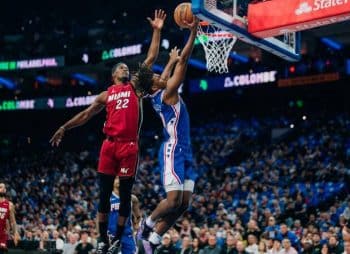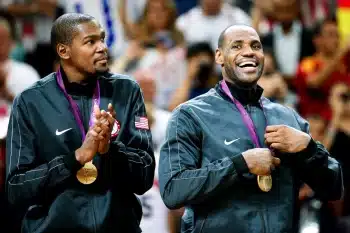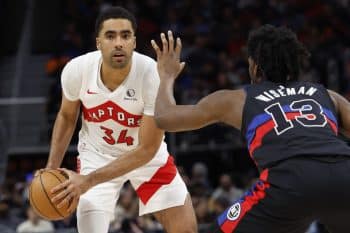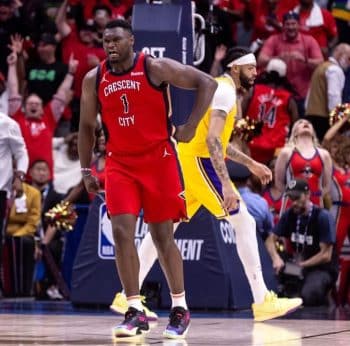NBA
Charge or Block? The NBA Should Revisit The Rules… Again
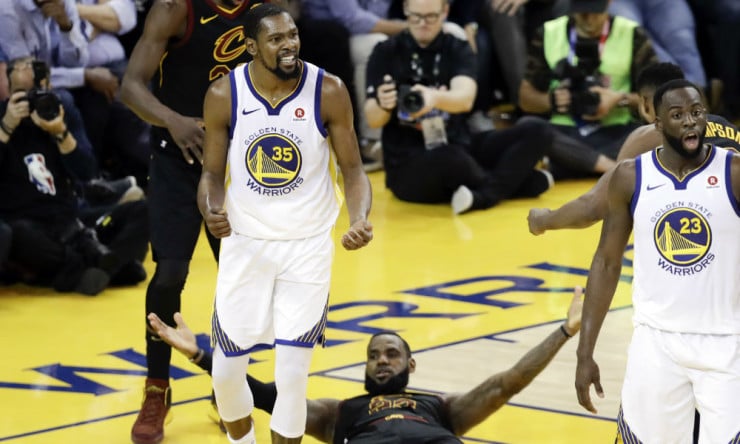
I’m no Damian Lillard, but even in my own right, I’m a bit of a Trail Blazer.
This isn’t about me, but allow me a moment of self-indulgence.
Among the national media, I was among the first voices to notice that LeBron James’ only mission at this point is to run down Kareem Abdul-Jabbar for the NBA’s all-time cumulative scoring record. Similarly, I was the first to raise the flag of doing away with making the NBA’s end of season awards being based solely on regular season accomplishments.
Now, allow me to make a similarly outlandish claim: it’s time for the league to hit the reset button on the age old debate of what constitutes a charge and what constitutes a block. It’s time for the league to delete everything we once thought we knew about the delineation.
Since the days of Michael Jordan, a defender’s best chance of thwarting his Airness was to beat him to a spot on the court and draw a charging foul. As the years have progressed, the line between charge and block has continued to be blurred, though, with the peak of its absurdity transpiring in the NBA Finals, of all places.
Sure, there’s a lot of basketball to be played, and at this point, it’s still possible for either the Golden State Warriors or Cleveland Cavaliers to come out on top in these 2018 NBA Finals.
But there’s no arguing that the result of one play exponentially reduced the probability of the Cavaliers winning an NBA Finals game and there’s no doubt that the ensuing loss equally reduced their chances of winning the championship.
Without even arguing the merits of that play in particular, over the past 25 years, the NBA has attempted to assign objective criteria to a rule that always has and always will be subjective.
What makes matters even worse is that the rules have become so cumbersome that they might as well not even exist.
For example, most people believe that the restricted area underneath the basket is an area in which it is impossible for a defensive player to draw a charge against an offensive player moving toward the basket. This isn’t true.
By rule, if an offensive player’s drive to the hoops begins below the lower defensive box (below the free throw line, in other words), then a charge may still be drawn even if a defensive player is in the restricted area.
We’ve also long held steadfast to the notion that a defensive player must be “planted” and stationary in order to draw a charging foul. However, that also isn’t true. For NBA officials, the delineating mark for a charge versus a block is whether the defender is in a legal guarding position and where his torso is in relation to the player he is defending.
While being planted and stationary certainly helps the determination between a block and a charge easier to make, it’s not the end-all, be-all as it relates to the call. It is possible for both a defender in the restricted area and one who is moving to draw a charge against an offensive player.
If it sounds confusing, that’s because it is.
For evidence of the fact, one need to look no further than former NBA official Steve Javie and the explanation he provided on ABC moments before it was determined and ruled that LeBron James had committed a block foul against Kevin Durant during the final minute of Game 1 of these Finals.
Javie, who spent 25 years as an NBA official and officiated 18 NBA Finals games, declared that Durant committed a charging foul on James because James was the fair owner of the space that Durant later occupied. Javie also stated that he would have called the play a charge because he believed that James beat Durant to the area and that although James was moving slightly when the contact occurred, Javie believed James’ feet to had been planted and that he was “firming up” and preparing for the contact as it was occurring.
In other words, what Javie, a 25-year official told us was that he attached his own subjective interpretation to the rule. Nowhere else had we seen or heard any discussion about whether or not a defensive player has the right to “firm up” or otherwise brace himself for the contact that he sees coming.
Javie joined ESPN’s SportsCenter after the game to discuss the call, but in his appearance, focused primarily on whether the NBA’s officials were permitted to review the call itself and what the rules were in relation to the review. Unlike he did during the game’s broadcast, however, Javie did not opine as to whether or not the play in question was indeed a block or a charge.
Because the play in question was pivotal, it has been and will be debated for quite some time. And regardless as to how you feel about the call that was made or not, the one thing that we can all agree on is that a charge/block call always has and always will be based on the subjective observation of the officials in attendance.
Sure, the NBA’s rulebook allows for a replay review to be made in such a situation, but only if there is a doubt as to whether or not the defensive player was in or outside of the restricted area. Some would review James’ play on Durant and conclude that there shouldn’t have been a doubt, while others will argue that there should have been.
In the end, one simply has to ask whether and at what point we begin to try too hard and end up outsmarting ourselves in the process.
And in the end, one can fairly wonder why it is that we can’t just reevaluate the rules as it relates to a charging foul and leave the call to the subjective interpretation of the three officials whose responsibility it is to call the game.
By rule, if an offensive player and a defensive player are sprinting toward the same basket, the offensive player is within his right to run into the defensive player and initiate contact en route to earning a blocking foul. But how can a defensive player be found guilty of “blocking” the offensive player’s path when the offensive player clearly initiates the contact? It’s a play that we see all the time.
Similarly, if a defensive player is chasing an off-ball defender around and an offensive player runs into him and initiates contact, so long as the defensive player’s feet weren’t planted, the odds of him being called for a blocking foul are quite high.
To quote Tyron Lue, it ain’t right.
At the end of the day, playing defense in basketball, at a very basic level, is about space. We’ve allowed offensive players to draw fouls and defensive players by swinging their arms under the outstretched arms of the defender and have forbidden defensive players from hand checking.
We’ve made the similar mistake of allowing offensive players to run into defensive players and initiate contact, and by permitting officials to pick and choose when to apply rules (seriously, how often do you see a charging foul get reviewed and overturned?), we’re left more confused.
It’s time for the NBA to just be honest. Most calls are obvious, but some aren’t. When they’re not, the officials should officially have the latitude to make a subjective determination as to which player was the fair occupier of the space in which the collision occurred. If the offensive player initiates the contact or fails to avoid a defender who beat him to the space, the call should be a charge. If, however, a defensive player arrives too late to have fair ownership of the space and inhibits the offensive player’s movement, it should be a blocking foul.
Similar to law enforcement officers, a lot of faith is put in the subjective determination of the NBA’s officials. Judgment calls shouldn’t be subject to replay and what happens in a split second doesn’t need to be reviewed for 10 minutes.
Had these guidelines been in place when Durant and James collided, the call still could have gone either way, but at least we’d know that the officials made their decision based on what they perceived in the moment. We wouldn’t be subjected to inequitable administration of replay rules and forced to guess why the officials made the call they did.
For the most part, replays help. Whether or not a shot was a three-pointer or not, whether it was released before the clock expired or not and whether a player was in or out of bounds are all examples of situations where its use is helpful.
When it comes to calling a block or a charge, though? I’m not so sure.
Obviously, neither was Steve Javie.
That’s more than enough for me to know that change is needed.
